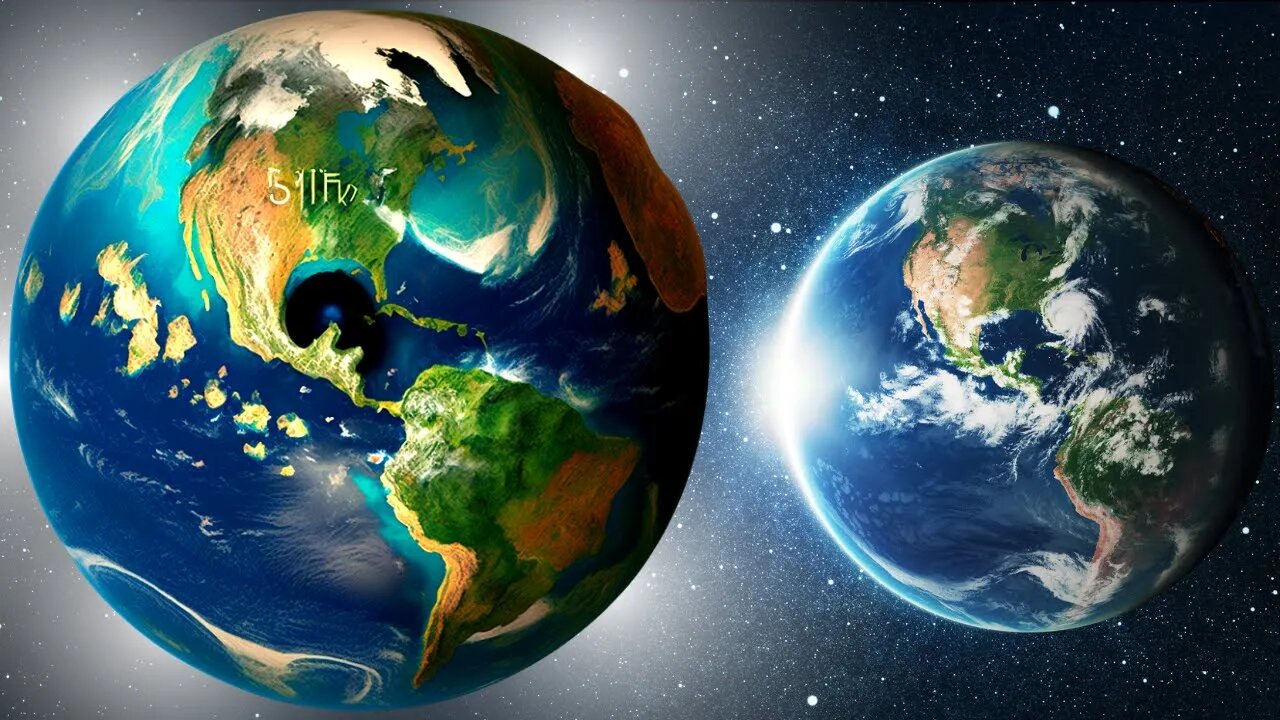Premium Only Content

"What If the Earth Was Doubled in Size? Mind-Boggling Scenarios Revealed!"
If Earth were twice its actual size, it would have a profound impact on the planet and its inhabitants. Here are some of the most significant changes that would occur:
Subscribe to Daily Dose Of Fact - https://bit.ly/2Z4b0m0
Gravity: The most obvious change would be an increase in gravity. With a larger Earth, the pull of gravity would be stronger, making it more difficult for people and animals to move around. This could have serious consequences for our ability to engage in physical activity, as well as for the movement patterns of animals. Additionally, a stronger gravitational pull could affect the orbit of the moon, causing it to crash into the Earth or become unstable, potentially leading to catastrophic consequences.
Atmosphere: A larger Earth would also have a more massive atmosphere, which could impact weather patterns and the distribution of gases in the atmosphere. This could result in more intense storms, stronger winds, and larger weather systems. The increased atmospheric pressure could also alter the way in which gases circulate and distribute heat, leading to significant changes in the Earth's climate.
Ocean Currents: With a larger Earth, the ocean currents would be more pronounced, which could impact the distribution of heat and nutrients in the ocean. This could have serious consequences for marine ecosystems, as well as for the global climate. The increased ocean currents could also result in more frequent and intense ocean storms, which could cause coastal erosion and damage to infrastructure.
Land Masses: If Earth were twice its size, the land masses would also be larger, with more land available for habitation. However, this would also increase the risk of earthquakes and volcanic activity, as the Earth's crust would be under more stress. Additionally, larger land masses could result in more intense and prolonged droughts in some areas, as well as increased flooding in others.
Plant and Animal Life: A larger Earth would also have a profound impact on plant and animal life. With a more massive atmosphere, the conditions for life would change, leading to a shift in the distribution and diversity of species. Additionally, a larger Earth would have more land and ocean surface area, which could support a greater diversity of species. However, this could also result in increased competition for resources, leading to the extinction of some species.
Human Civilization: Finally, a larger Earth would have a significant impact on human civilization. With more land available for habitation, the global population could grow, leading to increased resource use and pressure on the planet's ecosystems. Additionally, the increased gravitational pull could make it more difficult for people and goods to move around, potentially impacting trade and transportation. Furthermore, the increased risk of natural disasters, such as earthquakes and storms, could result in more frequent and devastating events.
Another significant impact of a larger Earth would be the increased mass and size of the planet's core. The Earth's core is responsible for generating the planet's magnetic field, which protects the planet from harmful solar radiation and charged particles. A larger core would result in a stronger magnetic field, providing greater protection against solar radiation and charged particles. However, a stronger magnetic field could also lead to increased magnetic storms, which could impact satellite and communication systems, as well as power grids.
A larger Earth would also have a significant impact on the planet's orbit and rotational speed. With a more massive planet, the gravitational pull on the planet would increase, which could result in a change in the planet's orbit. This could impact the distribution of heat and light, leading to changes in the planet's climate and seasons. Additionally, a larger Earth would rotate more slowly, which could result in longer days and nights.
The impact of a larger Earth on human civilization would also be significant. With more land available for habitation, cities and towns would grow, leading to increased pressure on the planet's resources. This could result in more frequent and intense resource competition, potentially leading to conflict and instability. Additionally, the increased risk of natural disasters, such as earthquakes and storms, could result in more frequent and devastating events, potentially leading to displacement and loss of life.
Moreover, the increased gravitational pull and atmospheric pressure could impact the design and operation of infrastructure and technology. For example, bridges and buildings would need to be designed and built to withstand the increased loads, while spacecraft and aircraft would need to be designed to operate in the stronger gravitational field.
-
 52:40
52:40
Candace Show Podcast
5 hours agoSaturday Night Lively: What Were They Thinking? | Candace Ep 148
101K113 -
 LIVE
LIVE
Producer Michael
5 hours agoTHE HOTTEST FRAGRANCES FOR 2025!
162 watching -
 18:44
18:44
Clownfish TV
5 days agoHollywood Has a DEI Temper Tantrum!
1.43K6 -
 LIVE
LIVE
The StoneZONE with Roger Stone
1 hour agoRoger Stone Provides Crucial Update On Classified JFK Assassination Docs | The StoneZONE
658 watching -
 1:09:44
1:09:44
Slightly Offensive
2 hours agoALMOST SERIOUS: How Mass Legal Immigration DESTROYED Australia | Guest: Maria Zeee
10.6K2 -
 54:43
54:43
LFA TV
1 day agoTrump vs. Karl-Theodor zu Guttenberg | TRUMPET DAILY 2.18.25 7PM
11.5K3 -
 2:02:21
2:02:21
Revenge of the Cis
6 hours agoEpisode 1449: Boo This
55.7K10 -
 1:20:31
1:20:31
Awaken With JP
7 hours agoWiping Hard Drives, Hire a Criminal Defense Lawyer - LIES Ep 79
95.5K59 -
 1:02:23
1:02:23
In The Litter Box w/ Jewels & Catturd
1 day agoDEI Kills | In the Litter Box w/ Jewels & Catturd – Ep. 744 – 2/18/2025
126K60 -
 1:06:37
1:06:37
Game On!
6 hours ago $1.02 earnedBreaking Down COLLEGE BASKETBALL BETTING LINES Like a Pro!
44.5K3